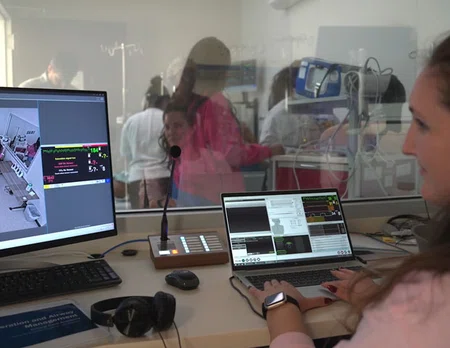© 2024. Houston Methodist, Houston, TX. All rights reserved.


In this
issue

WELCOME
NURSING SCIENCE

Robotic Tutor for Nursing

AI's Role in Nursing

Assessing the Knowledge and Attitudes of Registered Nurses About Artificial Intelligence in Nursing and Health Care
EDUCATION
PRACTICE

The Day in a Life of a Virtual Nurse and a Bedside Nurse

Enhancing Nursing Efficiency and Satisfaction with Smart Room Technology
PROFESSIONAL DEVELOPMENT

My Journey in Nursing: Into the Virtually Unknown

Engineered for Care: How Former Engineers Are Innovating Nursing
MAGNET
FROM OUR TEAMS

ABOUT DISCOVERN
MAGNET
The Integration of Continuous Renal Replacement Therapy Devices into EPIC in the Surgical and Liver Intensive Care Unit (SLICU)
By Misty Mendoza BSN, RN, CCRN and Tamara DuBose, DNP, RN, NE-BC
By Misty Mendoza BSN, RN, CCRN and Tamara DuBose, DNP, RN, NE-BC

The nursing vision at Houston Methodist is to “lead the world of nursing in an innovative and collaborative environment of excellence in patient care, education and research.”
In the Surgical and Liver Intensive Care Unit (SLICU) at Houston Methodist Hospital (HMH) in the Texas Medical Center, Continuous Renal Replacement Therapy (CRRT) is often used for patients who cannot undergo traditional intermittent hemodialysis. The hourly documentation associated with CRRT is exceptionally time-consuming for the bedside nurse.
To tackle this, SLICU Educator Misty Mendoza, BSN, RN, CCRN, and Nephrologist Anna Kagan, MD, PhD, teamed up to find a tech-driven solution. They proposed integrating CRRT devices with the existing Electronic Medical Records (EMR) system. The Medical Device Integration team was assigned to support the project, and after several meetings with stakeholders, the decision was made to use wireless connectivity for this integration. Once the integration solution was identified, biomedical engineering, integration technologists and security specialists from HMH and the CRRT equipment vendor were brought in, and the software on each CRRT device was upgraded to integrate with the EMR. After rigorous testing, the integration rolled out in SLICU in October 2023.
A post-implementation survey revealed that staff found the integration straightforward and that it eased their documentation workload. While the integration’s expansion is ongoing, they continue to collaborate with the vendor to explore additional options. This project showcases how nurses can leverage technology to enhance patient and staff experiences.









